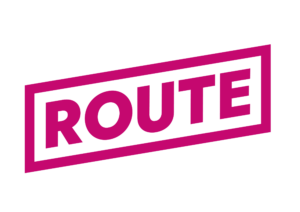 A guest blog from Euan Mackay, Chief Strategy Officer at Route Research, the research organization responsible for providing audience estimates to the out-of-home industry in Britain.
A guest blog from Euan Mackay, Chief Strategy Officer at Route Research, the research organization responsible for providing audience estimates to the out-of-home industry in Britain.
Note from Kym Frank: As noted in the prior Motionworks Blog (MRC OOH Measurement Standards: Behind the Numbers – Static Impressions), the systematic (but inconsistent) increase in impressions generated as a result of the transition from likelihood-to-see impressions (LTS) to opportunity-to-see impressions (OTS) as recommended in the new MRC Standards for OOH, will inevitably have the result of decreasing the effectiveness of OOH in market mix models, conversions studies, and other ROI analysis. I am grateful to Euan Mackay for sharing his thoughtful exploration of the math behind this inevitable outcome of the inflation of the medium’s impressions.
Euan has been a pivotal member of the team at Route for the last 8 years. Route is an organization that is similar to Geopath in Britain, where they enjoyed a 16.4% increase in ad spend for Q1 in OOH. He has more than 2 decades of experience in marketing and media research with prior leadership positions at Kantar Media and Crowd DNA.
New Standards for Out of Home (OOH) measurement published by the Media Ratings Council (MRC) have fairly wide-ranging implications for those trading within the industry. While cross-media comparability is nice in theory, it does bring about several potential challenges for those already operating and trading in the medium.
Kym Frank’s excellent walk-through on the implications on cost per thousands (CPMs) arising with a “softening” of the audience definitions for OOH and moving from the existing likelihood to see ads to a looser (and bigger) number who have an opportunity to see the ads is absolutely fundamental and needs to be closely considered by anyone active in this space, particularly those with the “best” (biggest, most premium) inventory.
Should the industry be on board with this, and decree that bigger numbers are always better and that the likelihood to see (LTS) can be used as a “quality score” to help justify premium pricing strategies, then the next consideration is how this change affects the effectiveness of the medium.
The desire for accountability in media planning has never been higher. Focus has shifted to outcome based marketing and unprecedented demand to demonstrate return on investment (ROI) on media spend.
Barely a day goes by without an Econometric / Mixed Media Modelling (MMM) study demonstrating the relative effect that each component part of the media mix has on generating returns.
It’s also no secret that for a long time, OOH has performed badly in these sort of studies. This is largely as a result of the lack of granularity of OOH data which feeds into these models. In many instances OOH is represented by national spend, rather than any audience data.
 Recent work in the UK by JCDecaux and Talon has demonstrated that the use of granular audience data from Route (the Geopath equivalent Joint Industry Currency for OOH audience measurement in Great Britain) can help to improve the effectiveness of OOH in MMM models by 42%.
Recent work in the UK by JCDecaux and Talon has demonstrated that the use of granular audience data from Route (the Geopath equivalent Joint Industry Currency for OOH audience measurement in Great Britain) can help to improve the effectiveness of OOH in MMM models by 42%.
In a nutshell, if you can feed in high quality, granular audience data which is based on people who are most likely to have seen the ads which cost money, the more likely you are to be able to associate / correlate movements in audience and movements in sales.
So the question is therefore, if the definition of “audience” for OOH changes and becomes looser (as the MRC is advocating) then how would this affect the models which determine effectiveness?
Taking the complex data science mechanics out of how the various models actually work and instead taking a simple conceptual view on this we could have a situation as follows:
- An OOH campaign generates 10,000,000 OTS “viewable impressions”.
- Of these 50% are likely to be seen, generating 5m “impacts”.
- This campaign leads to $5m of revenue.
The outcome of opening up the definition is that a larger “audience” number feeds into the effectiveness evaluation calculations… however the amount of sales generated is not affected and neither is the number of people who actually see the ad.
Therefore, in the current LTS situation, 5m impacts lead to $5m revenue ($1 per impact ROI). Yet, in the proposed Opportunity To See (OTS) situation, 10m impressions still lead to $5m revenue which means $0.50 per impression ROI).
So, the potential outcome of the proposed MRC change in definition is a negative impact on the effectiveness of the medium as a whole. By introducing a larger “audience” number into the inputs, you reduce the efficiency of the medium in the outputs of the evaluations.
In this instance we reduce it by half, meaning you need to buy twice as many OTS to do the same thing that you did previously, which then forces the CPMs down as advertisers want outcomes not potential audiences.
While the carrot of cross-media comparability is strong and absolutely requires some consideration (noting that whether these standards bring the medium closer to comparability at all is questionable), the stick of reduced efficiency and effectiveness of the OOH medium in terms of delivering outcomes for advertisers is something which the industry needs to understand fully before adopting ‘impressions’ as a metric wholesale.
If you would like to get involved in this conversation, if you have questions for Euan, or would like to discuss how the standards may impact your business, we would love to hear from you. Please contact [email protected]
